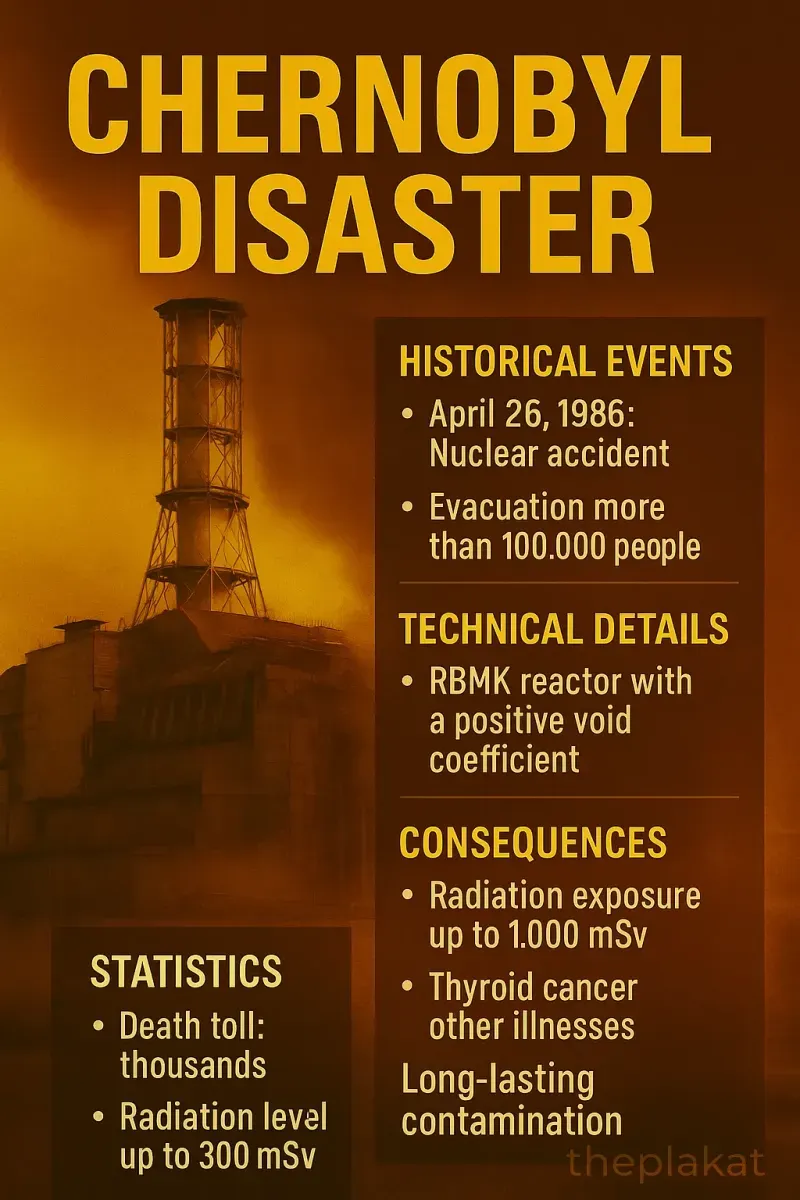Published
in Chronicles
The Chernobyl disaster was one of the most catastrophic nuclear accidents in history. On April 26, 1986, a flawed reactor design and operator errors led to a massive radioactive release in the Soviet Union.
At 01:23 AM on April 26, 1986, Reactor 4 of the Chernobyl Nuclear Power Plant exploded during a safety test. A combination of design flaws in the RBMK-1000 reactor and procedural violations triggered a massive steam explosion, resulting in the release of large quantities of radioactive isotopes into the atmosphere.
Initial fires were extinguished by brave firefighters, many of whom received fatal doses of radiation. Within 36 hours, 49,000 residents of nearby Pripyat were evacuated. By May 1986, over 115,000 people had been relocated from the 30-kilometer exclusion zone. In total, around 350,000 people were eventually resettled due to contamination.
Radiation exposure ranged from background levels up to 300 mSv/hour in localized hotspots. The average dose among cleanup workers, or 'liquidators', was around 100 mSv, with some receiving up to 1,000 mSv. A significant rise in thyroid cancer among exposed children was documented. Other long-term health effects are still being monitored. The environment saw lasting contamination, especially from isotopes like cesium-137 and strontium-90.
The RBMK reactor used in Chernobyl had a 'positive void coefficient', meaning power increased when coolant water turned to steam — a dangerous feedback loop. It lacked a full containment structure, contributing to the scale of the disaster. These design flaws were later corrected in remaining RBMK reactors across the former Soviet Union.
Officially, under 50 immediate deaths were attributed to the explosion and acute radiation syndrome. The World Health Organization estimates up to 4,000 future cancer-related deaths among the most exposed populations. Contamination zones were defined by levels exceeding 555 kBq/m² of cesium-137. The exclusion zone today remains largely uninhabited, but is home to scientific research and even tourism.

Over 115,000 people were evacuated in 1986 from the 30-kilometer exclusion zone. By the 1990s, total resettlement exceeded 350,000 people.
A safety test at low power exposed design flaws in the RBMK reactor and procedural errors, resulting in an uncontrollable power surge and explosion.
The most clearly documented effect is increased thyroid cancer, especially in children. Other effects include elevated cancer risks and psychological stress.
Certain areas remain highly radioactive, but many parts have relatively low radiation levels. Scientific research and controlled tourism are now allowed.